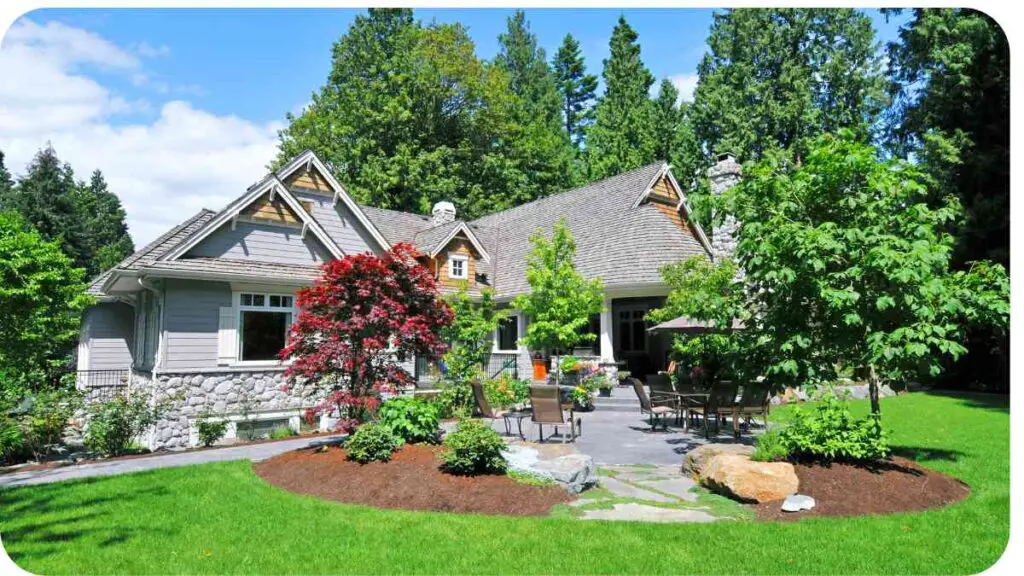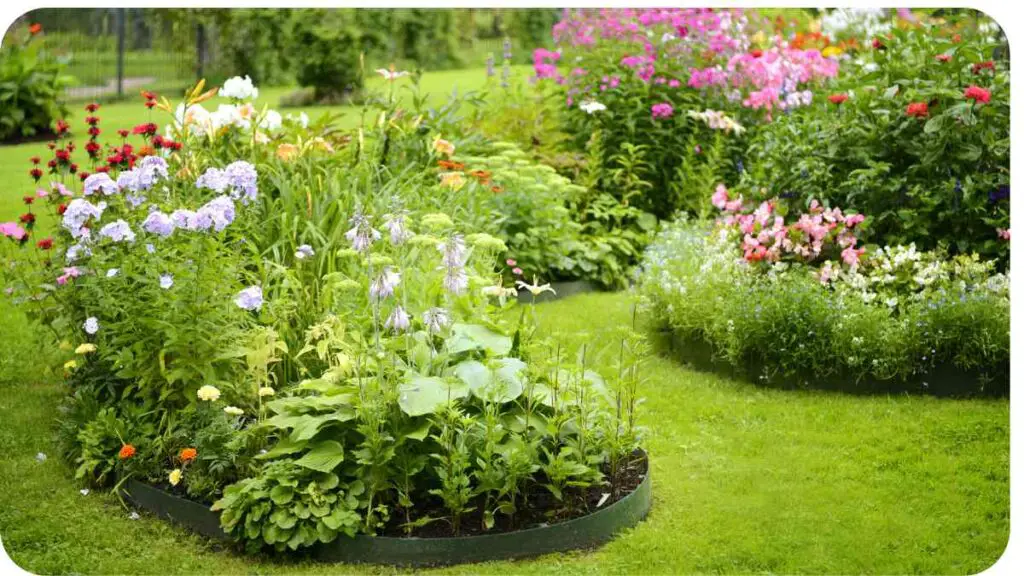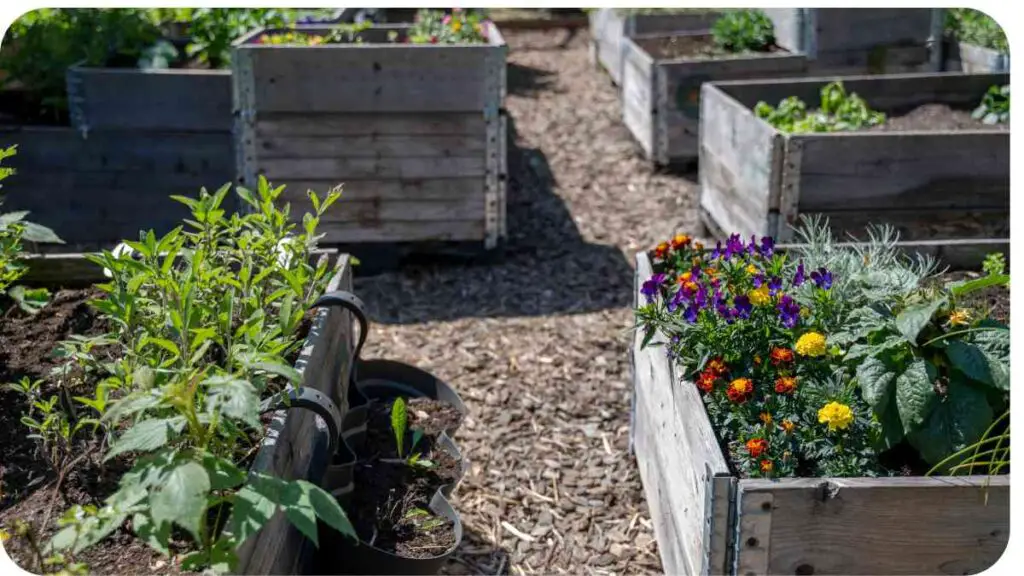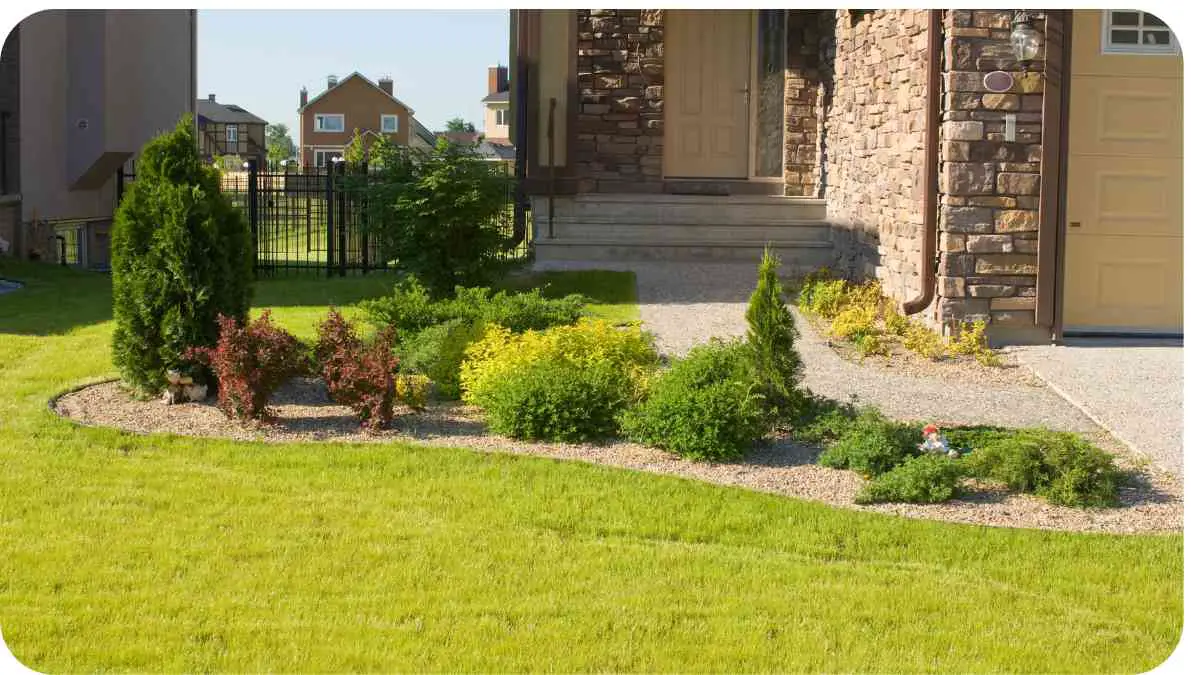When it comes to enhancing the beauty of your home, few things can rival the charm of a well-designed front yard with vibrant flower beds. Flower beds not only add color and texture but also boost curb appeal and invite admiration from neighbors and passersby.
However, building an attractive front yard with flower beds requires careful planning and maintenance. In this guide, we’ll walk through the steps to create stunning flower beds that will make your front yard the envy of the neighborhood.
2. Planning Your Front Yard Flower Beds

Before you start digging, take some time to plan out your front yard flower beds. Here’s a table summarizing key points to consider during the planning phase:
| Aspect | Details |
|---|---|
| Sunlight Exposure | Determine the amount of sunlight your front yard receives throughout the day. |
| Soil Quality | Test the soil to understand its pH level and nutrient content. |
| Space Available | Measure the area for flower beds and consider any existing landscaping. |
| Design Preference | Decide on the layout and style of your flower beds. |
3. Choosing the Right Flowers
Selecting the right flowers is crucial for the success of your front yard flower beds. Here are some factors to consider:
Building a drought-resistant front yard can be a rewarding challenge. Drought-resistant front yard designs offer a sustainable and visually appealing landscape.
| Factor | Considerations |
|---|---|
| Climate | Choose flowers that are suitable for your climate zone. |
| Height | Plan for a variety of heights to add depth and interest to your flower beds. |
| Color Scheme | Decide on a color scheme that complements your home’s exterior and other landscaping. |
| Maintenance Level | Consider the maintenance requirements of different flower varieties. |
Choosing a mix of annuals and perennials can ensure continuous blooms throughout the seasons.
4. Designing Your Flower Beds

Designing your flower beds is where your creativity shines. Here’s a breakdown of key design elements:
| Element | Details |
|---|---|
| Bed Shape | Decide on the shape of your flower beds – curved, rectangular, or geometric. |
| Focal Points | Add focal points like tall flowers or ornamental grasses for visual interest. |
| Edging Options | Choose edging materials such as bricks, stones, or decorative borders. |
| Layering | Plan for layering with taller plants at the back and shorter ones in the front. |
5. Preparing the Soil
Preparing the soil is essential to provide a healthy environment for your flowers to grow. Here’s what you need to do:
Transforming a sloping front yard from a challenge to a beautiful landscape is achievable. Transforming challenges into beauty requires careful planning and creative design.
| Step | Details |
|---|---|
| Clearing the Area | Remove any existing grass, weeds, or debris from the flower bed area. |
| Soil Amendments | Add compost or organic matter to improve soil structure and fertility. |
| Testing pH Levels | Test soil pH and make adjustments if necessary for optimal plant growth. |
| Loosening the Soil | Use a garden fork or tiller to loosen the soil to a depth of at least 8-12 inches. |
6. Planting Your Flowers
Now comes the fun part – planting your chosen flowers. Here’s a planting guide:
| Step | Details |
|---|---|
| Arranging Plants | Arrange plants according to your design, considering height and spacing. |
| Digging Holes | Dig holes slightly larger than the root balls of your plants. |
| Planting Depth | Plant flowers at the same depth they were in their containers. |
| Backfilling and Watering | Fill the holes with soil, tamp lightly, and water thoroughly after planting. |
7. Mulching for Maintenance
Mulching helps retain moisture, suppress weeds, and regulate soil temperature. Here’s how to mulch effectively:
| Step | Details |
|---|---|
| Choosing Mulch | Select organic mulch like wood chips or shredded bark for flower beds. |
| Applying Mulch | Spread mulch evenly around plants, leaving a few inches of space around stems. |
| Mulch Thickness | Apply a 2-3 inch layer of mulch for optimal benefits. |
| Mulch Maintenance | Top up mulch as needed and keep it away from direct contact with plant stems. |
Mulching not only maintains soil health but also adds to the visual appeal of your flower beds.
8. Watering and Fertilizing
Proper watering and fertilizing are crucial for the health and blooming of your flowers. Here’s a guide:
| Aspect | Details |
|---|---|
| Watering Schedule | Water deeply and regularly, especially during dry spells. |
| Fertilizing Frequency | Feed flowers with a balanced fertilizer according to package instructions. |
| Organic Options | Consider organic fertilizers for a more sustainable approach. |
| Avoiding Overfeeding | Be cautious not to over-fertilize, which can harm plants. |
9. Maintenance Tips
Keeping up with maintenance ensures your front yard flower beds stay beautiful throughout the seasons. Here are some maintenance tips:
A xeriscape front yard provides water-efficient landscaping. Water-efficient landscape is a practical and eco-friendly solution for front yard design.
| Aspect | Details |
|---|---|
| Deadheading | Remove spent flowers to encourage new blooms and maintain tidiness. |
| Pruning | Prune dead or damaged foliage and shape plants as needed for aesthetics. |
| Weeding | Regularly remove weeds to prevent them from competing with your flowers. |
| Monitoring Pests | Keep an eye out for pests and treat infestations promptly to avoid damage. |
Regular maintenance keeps your flower beds healthy and thriving.
10. Dealing with Pests and Weeds
Pests and weeds can wreak havoc on your flower beds if left unchecked. Here’s how to deal with them:
| Issue | Solutions |
|---|---|
| Weeds | Use mulch to suppress weeds, hand-pull weeds, or use an organic weed killer. |
| Aphids, Snails, Slugs | Introduce beneficial insects like ladybugs, or use organic pest control methods. |
| Fungal Diseases | Improve air circulation, avoid overhead watering, and use fungicidal sprays if needed. |
Early detection and prevention are key to managing pests and weeds effectively.
11. Seasonal Care Guide
Different seasons require different care for your flower beds. Here’s a seasonal care guide:
| Season | Care Tasks |
|---|---|
| Spring | Deadhead early bloomers, divide overcrowded perennials, and apply a balanced fertilizer. |
| Summer | Water deeply during dry spells, mulch to retain moisture, and monitor for pests. |
| Fall | Clean up debris, cut back spent foliage, and plant fall-blooming flowers or bulbs. |
| Winter | Mulch to protect plants from frost, cover tender plants, and clean and store garden tools. |
Adapting care routines to each season ensures your flower beds remain healthy year-round.
12. Enhancing Curb Appeal with Flower Beds
Well-designed flower beds can significantly enhance your home’s curb appeal. Here’s how:
| Tip | Details |
|---|---|
| Symmetry and Balance | Create symmetry with balanced planting arrangements for a polished look. |
| Seasonal Accents | Add seasonal accents like decorative pots or holiday-themed decorations. |
| Lighting Effects | Illuminate flower beds with outdoor lighting to highlight them at night. |
| Pathway Integration | Integrate flower beds along pathways or around focal points for flow. |
13. Sustainable Practices for Flower Bed Gardening

Practicing sustainability in flower bed gardening not only benefits the environment but also promotes healthier plants. Here’s how to garden sustainably:
| Practice | Details |
|---|---|
| Water Conservation | Use drip irrigation or soaker hoses to water efficiently and reduce waste. |
| Composting | Compost kitchen scraps and yard waste to create nutrient-rich soil amendments. |
| Native Planting | Choose native plants, which require less water and are adapted to local conditions. |
| Chemical-Free Pest Control | Use natural predators, companion planting, and organic pest control methods. |
14. Common Mistakes to Avoid
Avoiding common mistakes can save you time and frustration in maintaining your flower beds. Here are some pitfalls to steer clear of:
Maximizing your front yard space for outdoor enjoyment is essential. Outdoor enjoyment can be achieved by incorporating various design elements and features.
| Mistake | Tips to Avoid |
|---|---|
| Overcrowding | Give plants enough space to grow by following spacing recommendations. |
| Ignoring Soil Health | Maintain soil fertility and structure with regular amendments and testing. |
| Neglecting Watering | Water deeply and consistently, especially during hot and dry periods. |
| Forgetting Maintenance | Stay on top of deadheading, weeding, and pest control to prevent problems. |
Being mindful of these mistakes can help you create thriving flower beds.
Designing a beautiful front yard landscape is a rewarding endeavor. Landscaping front yard involves selecting appropriate plants, materials, and layout for a visually appealing yard.
15. Conclusion
Building a front yard of flower beds can be a rewarding project that adds beauty and charm to your home. By following these steps, from planning and design to maintenance and sustainability, you can create stunning flower beds that enhance your curb appeal and bring joy throughout the seasons. Start planning your flower beds today and enjoy the colorful rewards they bring to your front yard!
Further Reading
Here are some additional resources to explore for more tips and inspiration:
- How to Make a Flower Bed (Martha Stewart)
- Martha Stewart provides detailed instructions and inspiration for creating beautiful flower beds.
- Front Garden Makeover (Ugly Duckling House)
- Follow along with the Ugly Duckling House’s front garden makeover project for practical ideas and transformations.
- Flower Beds for Beginners (HGTV)
- HGTV offers beginner-friendly tips and design ideas for creating stunning flower beds.
FAQs
How do I choose the right flowers for my front yard flower beds?
For choosing the right flowers, consider factors like your climate, sunlight exposure, desired colors, and maintenance level.
When is the best time to plant flowers in my front yard?
The best time to plant flowers depends on your climate, but generally, spring and fall are ideal for most regions.
How often should I water my front yard flower beds?
Watering frequency depends on factors like weather conditions and soil moisture, but aim to water deeply when the soil feels dry to the touch.
How can I prevent weeds from overtaking my flower beds?
Mulching regularly, hand-pulling weeds, and applying pre-emergent weed control can help prevent weeds from taking over your flower beds.
What are some low-maintenance flower options for beginners?
Low-maintenance flowers include daylilies, coneflowers, sedum, and black-eyed Susans, which require minimal care once established.

Hi! My name is Hellen James, and I’m here to help you with your home-maintenance needs. Whether it’s building a better yard or just trying to fix a garden—I can show you how.

